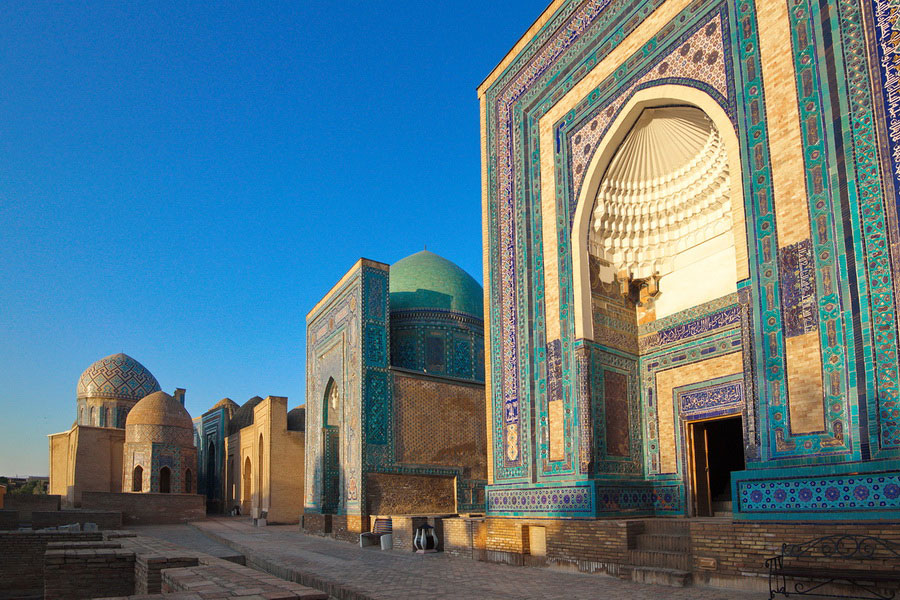POPULATION
551.700
CURRENCY
UZBEK SUM
TIMEZONE
GMT +5:00
LANGUAGE
UZBEK
WEATHER
JULY 33ºC /
JANUARY 1ºC
AIRPORTS
Samarkand International Airport
HISTORICAL IMPORTANCE OF SAMARKAND
Samarkand holds profound historical importance as one of the oldest continuously inhabited cities in Central Asia, dating back over 2,500 years. It served as a key hub along the ancient Silk Road, connecting China to the Mediterranean and playing a pivotal role in trade, culture, and intellectual exchange between East and West. Throughout its history, Samarkand has been influenced by various civilizations, including Persian, Greek, Turkish, and Islamic empires, each leaving their mark on its architecture, arts, and traditions. The city reached its zenith under the rule of Timur (Tamerlane) in the 14th century, becoming a glittering capital of his vast empire and a center of Islamic scholarship, art, and architecture. Today, Samarkand's historical significance is reflected in its UNESCO-listed monuments such as the Registan Square, Bibi-Khanym Mosque, and Shah-i-Zinda necropolis, which continue to attract visitors from around the world to marvel at their grandeur and cultural richness.

CITY OF CROSSROADS
Samarkand's status as the "City of Crossroads" stems from its strategic location along the ancient Silk Road, a network of trade routes that connected China with the Mediterranean world. Situated in the fertile Zarafshan River valley in modern-day Uzbekistan, Samarkand became a pivotal center where merchants, travelers, scholars, and cultures from East and West converged for centuries. This geographic position facilitated the exchange of goods, ideas, technologies, and cultural practices between diverse civilizations, including Persian, Greek, Indian, Chinese, Turkish, and later Islamic empires. The city's cosmopolitan atmosphere and cultural diversity contributed to its intellectual and artistic vitality, making Samarkand not only a commercial hub but also a center of learning, religious tolerance, and architectural innovation. Today, Samarkand's UNESCO-listed monuments, such as the Registan Square and Shah-i-Zinda necropolis, stand as testament to its rich history as a crossroads of civilizations.
THE BEST TIME TO VISIT SAMARKAND
The best time to visit Samarkand is during the spring and autumn months, particularly from April to June and September to October. During these periods, the weather is generally mild and pleasant, with comfortable temperatures ideal for exploring the city's outdoor attractions and historical sites like the Registan Square, Bibi-Khanym Mosque, and Shah-i-Zinda necropolis. Spring brings blooming gardens and lush landscapes, adding to the city's aesthetic charm, while autumn offers clear skies and cooler temperatures, perfect for sightseeing and outdoor activities. Additionally, these seasons coincide with fewer crowds compared to the peak summer months, allowing visitors to enjoy Samarkand's cultural and architectural treasures in a more relaxed atmosphere. It's advisable to avoid the hot summer months (July and August) when temperatures can be quite high, and winter (December to February) when it can be cold, although Samarkand's winter is generally milder compared to other parts of Central Asia.
TRANSPORTATION TO SAMARKAND
Samarkand is well-connected by various means of transportation, making it accessible for visitors from within Uzbekistan and beyond. The city has a domestic airport, Samarkand International Airport (SKD), which operates flights to and from major cities in Uzbekistan like Tashkent and Bukhara, as well as international destinations. For those traveling by train, Samarkand is a major railway hub with daily connections to cities across Uzbekistan, including high-speed trains from Tashkent and Bukhara. The train journey from Tashkent to Samarkand, known for its scenic views, is particularly popular among tourists. Within the city, transportation options include taxis, buses, and shared vans (marshrutkas) that provide convenient access to various landmarks and neighborhoods. Samarkand's central location and well-developed transport infrastructure make it easily accessible and a rewarding destination for exploring the cultural and historical wonders of Central Asia.
CULTURAL HERITAGE
Samarkand's architectural and cultural heritage is recognized globally, with several of its monuments listed as UNESCO World Heritage sites since 2001, drawing visitors and scholars interested in its rich history and Islamic architecture.
THINGS TO DO AND PLACES TO VISIT
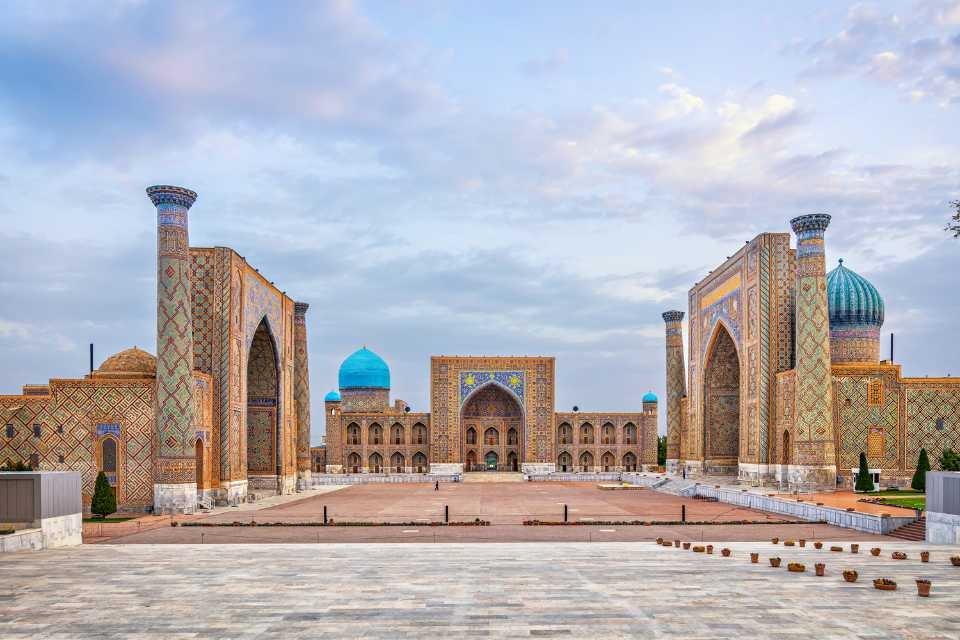
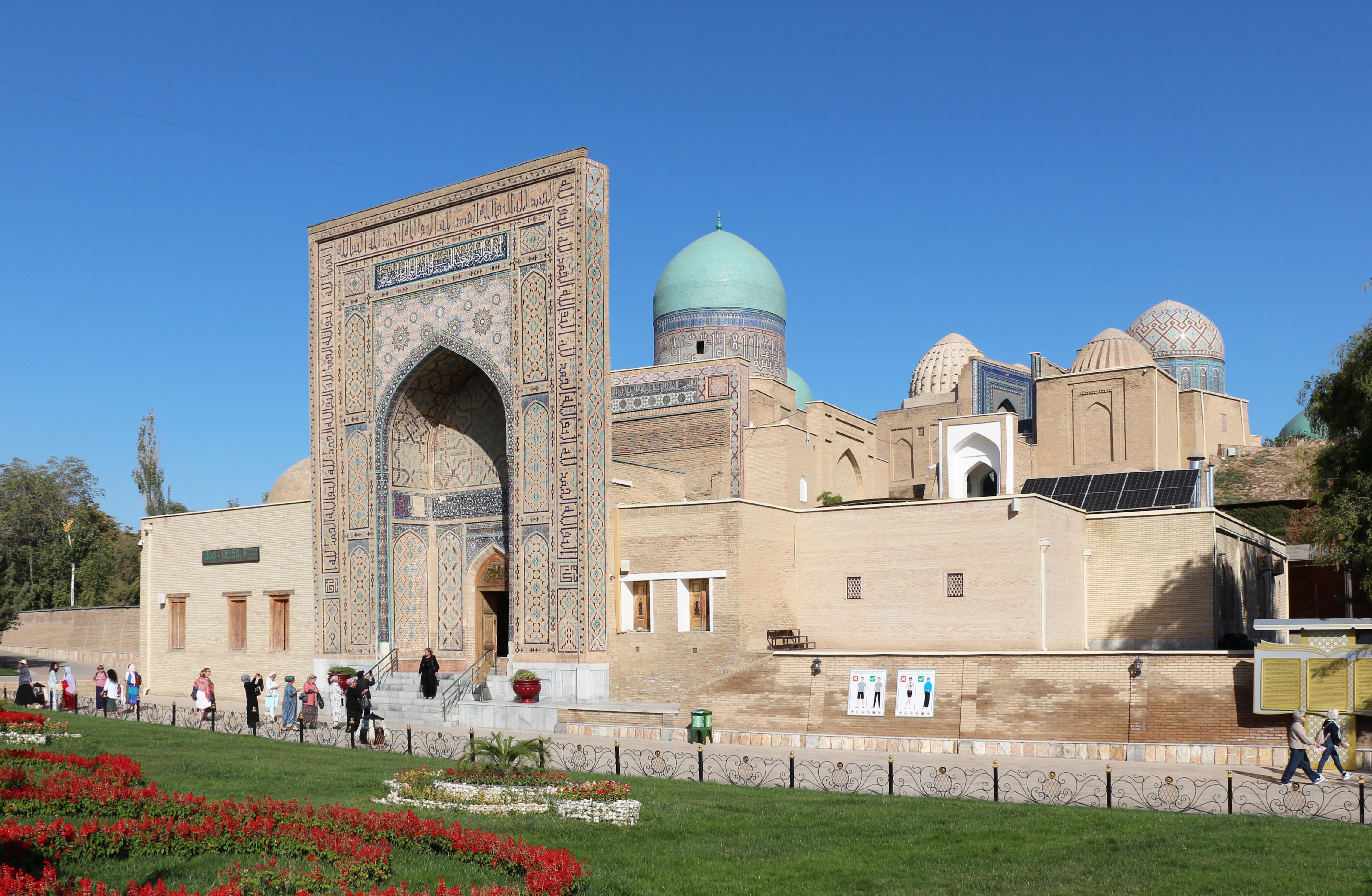
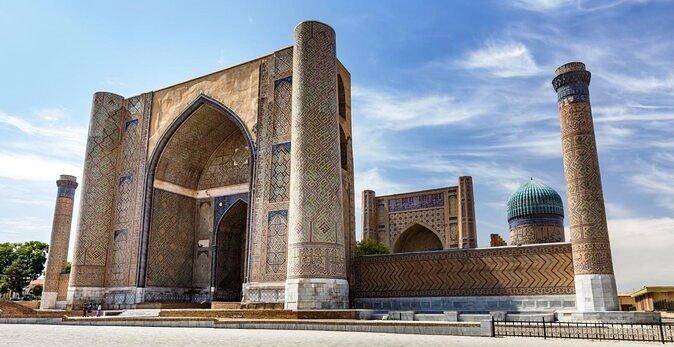
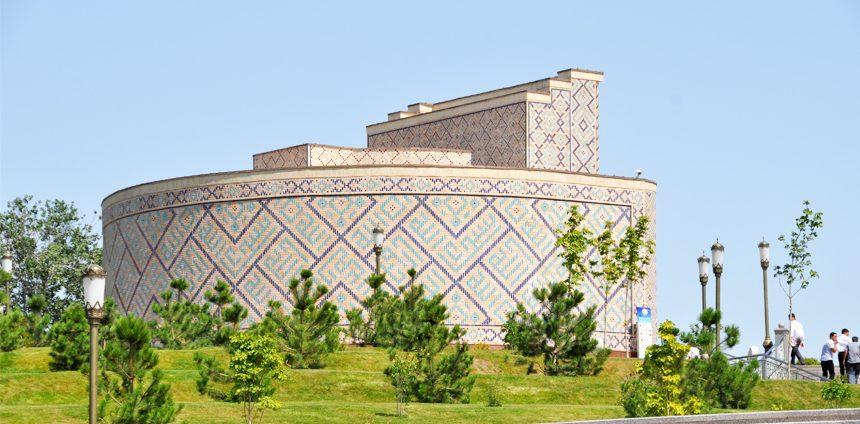
WHAT TO EAT IN SAMARKAND

SAMSA
Samsa is a popular savory pastry enjoyed throughout Central Asia, including Uzbekistan. It consists of a flaky, buttery pastry dough filled with minced meat, typically lamb or beef, along with onions, spices like cumin and sometimes peppers. The filling is seasoned generously and enclosed in a triangular or square shape, then baked in a tandoor oven or sometimes in regular ovens until golden brown and crispy. Samsa is often enjoyed as a snack or appetizer, and it pairs well with tea or ayran (a yogurt-based drink). It's a versatile dish found in street food stalls, local bakeries, and traditional restaurants across Uzbekistan, appreciated for its hearty flavors and satisfying texture.

LAGMAN
Lagman is a popular noodle soup dish enjoyed in Uzbekistan and throughout Central Asia. It features hand-pulled noodles, known as lagman noodles, which are thick and chewy, similar to spaghetti but wider. The soup is typically prepared with a flavorful broth made from meat (often beef or lamb), mixed with a variety of vegetables such as bell peppers, carrots, onions, and tomatoes. The dish is seasoned with spices like cumin, chili peppers, and garlic, giving it a distinctive aroma and taste. Sometimes, lagman can also include chunks of meat or minced meatballs for added protein. It's a hearty and comforting dish, often served hot and garnished with fresh herbs like cilantro or parsley. Lagman is enjoyed year-round and is a favorite choice during colder months in Uzbekistan, offering a satisfying and wholesome meal.
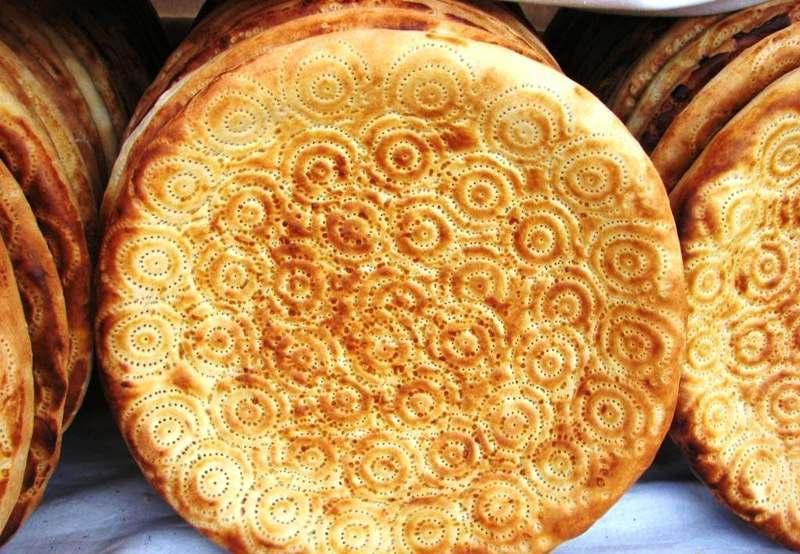
NON
Non, also known as "naan" in some regions, is a staple bread in Uzbek cuisine and Central Asian culture. It is traditionally baked in a tandoor, a cylindrical clay oven, which gives it a distinct flavor and texture. Non is typically round and flat, with a crusty exterior and a soft, fluffy interior. The preparation of non varies across regions, with different shapes and sizes depending on local traditions and preferences. It serves as an essential accompaniment to meals, complementing dishes like plov (pilaf), shashlik (grilled meat skewers), and soups. Non also holds cultural significance, often used in rituals and celebrations, symbolizing hospitality and community. Its popularity extends beyond Uzbekistan, being a beloved bread throughout Central Asia and parts of the Middle East, enjoyed fresh and warm from the oven.

CHAKKA
Chakka, also known as "chaka" or "chek", is a traditional dairy product widely consumed in Uzbekistan and other Central Asian countries. It is made by fermenting milk and separating the curds from the whey. The resulting curds are then dried and shaped into small balls, which are typically stored for preservation. Chakka has a tangy and slightly salty flavor, with a crumbly texture similar to cheese. It is often enjoyed as a snack or added to dishes for extra flavor and texture. In Uzbek cuisine, chakka is used in various ways, such as in soups, salads, or simply eaten on its own. It is valued not only for its taste but also for its nutritional benefits, being rich in protein and probiotics. Chakka reflects the region's nomadic heritage, where dairy products play a significant role in the diet and culinary traditions.
HOW MANY DAYS SHOULD YOU SPEND IN SAMARKAND?
To fully appreciate the cultural and historical richness of Samarkand, it's recommended to spend at least 2 to 3 days exploring the city. This allows enough time to visit the major landmarks such as the Registan Square, Bibi-Khanym Mosque, Shah-i-Zinda necropolis, and Ulugbek Observatory, each offering unique insights into the city's architectural splendor and historical significance. Additionally, exploring local markets, enjoying traditional Uzbek cuisine, and experiencing the vibrant atmosphere of Samarkand contribute to a well-rounded cultural experience. For those interested in delving deeper into the city's history and visiting nearby attractions like Shakhrisabz or the Afrosiab Museum, extending your stay to 4 or more days would provide a more comprehensive exploration of Samarkand and its surroundings.
